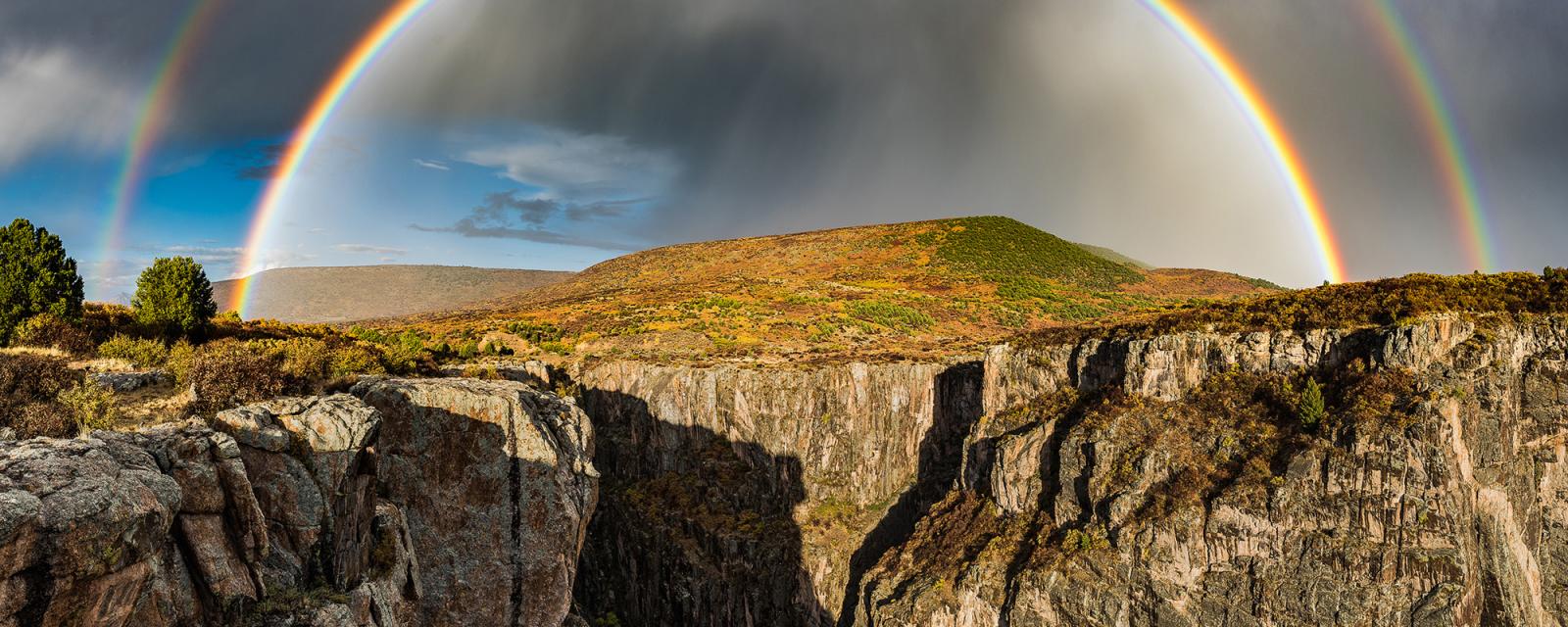Uncage your birding passion
Western Colorado, with its vastly varied landscape, attracts droves of birds each year. Birders hungry to add to their lifelist – a list of species seen by a person – eagerly follow the predictable migratory paths that weave their way in and out of Montrose. Adding to your life-list is simple when you know where to find the local birding hot spots.
Black Canyon National Park
Black Canyon offers up a unique birding experience where watchers get a dramatic sense of a bird’s perspective as they gaze from the canyon’s rim to the Gunnison River 2,000 feet below. The river twists and turns between the precipitous canyon walls, forming a spectacular water pathway that provides incredible steering currents for the fastest bird in the world, the peregrine falcon. With a little patience you may glimpse this speedy raptor as it rockets past the Painted Wall in spring and summer.
Other birds of prey, like the impressive red-tailed hawk, perch along the canyon walls and amid the twisted branches of the juniper trees that decorate the canyon’s rim. Overlooks and trails along South Rim Drive are ideal places to spy hawks soaring on the canyon winds. High Point, at the farthest reach of South Rim Drive, hosts a variety of birds during the warmer summer months, and bird watching at this location is about as easy as it gets. Take a seat at one of the many picnic tables placed under the shade of the juniper trees and wait for the birds to come to you. Stellar jays, northern flickers, and hairy woodpeckers frequent this location.
After taking in the canyon from the South Rim, East Portal Road dives to the bottom of the canyon via a breathtaking drive that leads past some of the tallest cliffs in America. The cool, clean waters of the Gunnison River at the bottom of the canyon host many types of water fowl.
Ridgway State Park
Directly to the south of Montrose lies picturesque Ridgway State Park, yet another birder’s delight. The park encompasses a 1000-acre reservoir that
welcomes thirsty migratory birds. Ducks, white-faced ibis, loons, and the graceful great blue heron can often be found anywhere around the water from spring on into late fall, a time of year when the cooler temperatures usher in much more than beautiful golden aspen leaves.
Fall is when the annual Kokanee salmon spawn takes place. These plump, roe-filled salmon lure locals eager to snag a catch, but birders will be overjoyed to learn that they also attract bald eagles. These magnificent birds with wingspans of over seven feet can be spotted feeding on the salmon. Look for them perched in the trees along the Uncompahgre River and along US Highway 550 as it moves south toward Ridgway.
On your way back to Montrose, watch for blue heron nests in the treetops along the east side of Highway 550. Nests are most active in the springtime.
Fruitgrowers Reservoir
Approximately 30 miles north of Montrose lies Fruitgrowers Reservoir – yet another excellent location to add species to your life-list. Nearby orchards, cottonwoods, Russian olives, sagebrush, and willows provide plenty of cover for smaller birds like the brewer’s sparrow and the willow flycatcher.
Winter snowmelt from Grand Mesa, the largest flat top mountain in the world, swells the reservoir with enough water to attract a wide variety of shorebirds and waterfowl. Great blue herons, American bitterns, and willets are plentiful in the area, and it is common to see bald eagles and peregrine falcons here as well.
The highlight at the reservoir occurs a few days each spring when thousands of elegant, crimson-capped sandhill cranes magically appear, their distinct bugling giving away their location high in the big blue skies as they near this stop on their migratory route.
Seeing these large birds arrive in small groups in the late afternoon is amazing, but the real thrill comes the following morning when, without any sort of warning, the well-rested birds suddenly take flight, filling the quiet morning air with the sounds of the cranes’ beating wings and bugles. The birds slowly ascend warm air currents and vanish into the big blue sky. This amazing event is something every birder should witness at least once in their lifetime.
Riverbottom Park and Chipeta Lake in Montrose
A wide variety of birds can be seen right in the heart of Montrose at Riverbottom Park, Chipeta Lake, and from paved trails that move in and around the beautiful waters of the Uncompahgre River.
Keep your eyes and ears open for a wide variety of smaller birds as you stroll along the river. Northern flickers and black-capped chickadees are common in spring and summer. They prefer bouncing among the dense tree branches overhead. It’s not unusual to catch a glimpse of the awe-inspiring great horned owl, which also likes to take cover in the dense foliage of these large trees. Early mornings and late afternoons are the best times to see these nocturnal birds.
Geese, great blue herons, and mallard ducks can be found along the river and in high concentrations at Chipeta Lake and the small pond at Riverbottom Park. If you are up for more of a challenging hike, ascend the trail from the river to the top of Sunset Mesa for a bird’s-eye view of the Uncompahgre valley and extended bird-watching opportunities.
There is a reason why birds choose to live at or visit all of the great areas mentioned above – they are smart. Birds know a good location when they see it, and the unspoiled beauty of the surrounding mountains, rivers, and forests is about as good as it gets. Montrose just happens to be right in the heart of it all.




